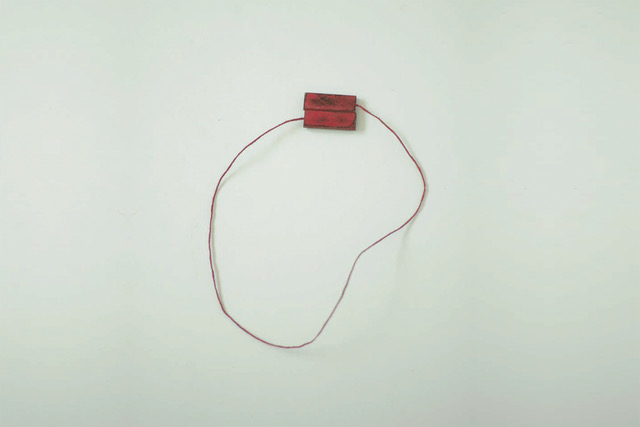Afterlife | Personal Reflections on Ryuji Mitani’s Tableware
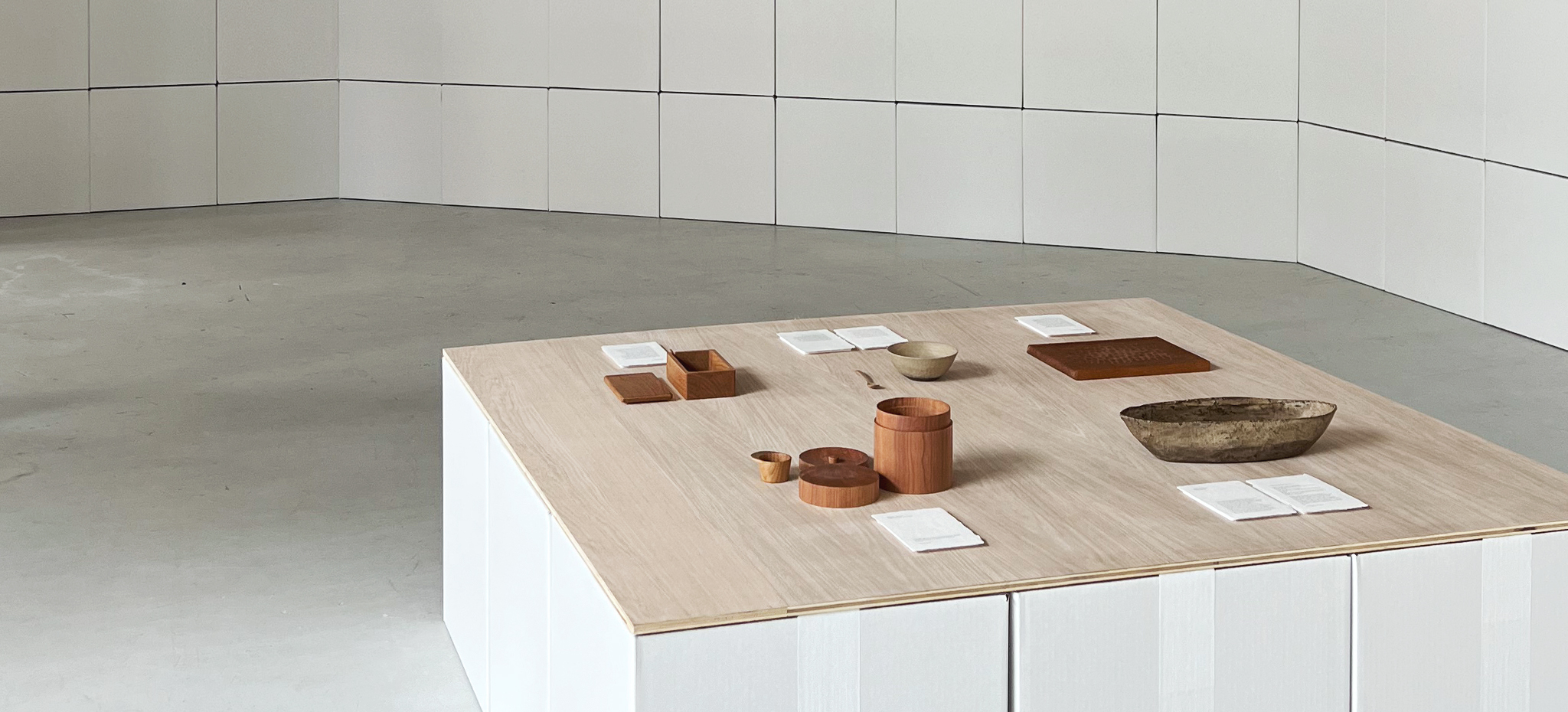
Apart from our new temporary Annex location and the opportunity to showcase yet another beautiful collection of works by Ryuji Mitani, one of the most exciting parts of our latest exhibition, ‘Crafts, and Then’ was a special exhibit we prepared called ‘Afterlife’. With the participation of friends of Nalata Nalata, we tracked the life that some of Mitani-san’s tableware have led through anecdotes that were exhibited alongside the beloved pieces. We wanted to share them here for all those unable to attend in person to give the exhibit yet another life, so to speak. Please enjoy the meaningful words by all seven participants below, including one from our little family.


Butter Case
“As a child, I grew up in a family that liked acquiring “nice things” but somehow always saved using them for later. I soon came to realize that “later” – a new house or the right occasion – may never materialize. While as an adult I vowed not to follow the example of my parents, life still plays tricks on me from time to time. In a simple twist of fate, when I became a proud owner of a nice set of suitcases, the pandemic prevented us from traveling. Similarly, with equal pride, I brought the Butter Case into our life, soon to learn that, perhaps, we need to watch our cholesterol. And so, instead of a daily item, the Butter Case has now become something more special – it comes out when we bake an occasional cake and when friends are over. It signifies an appeal of a forbidden pleasure and a good time to be had”.
– Anastasia Pozdniakova

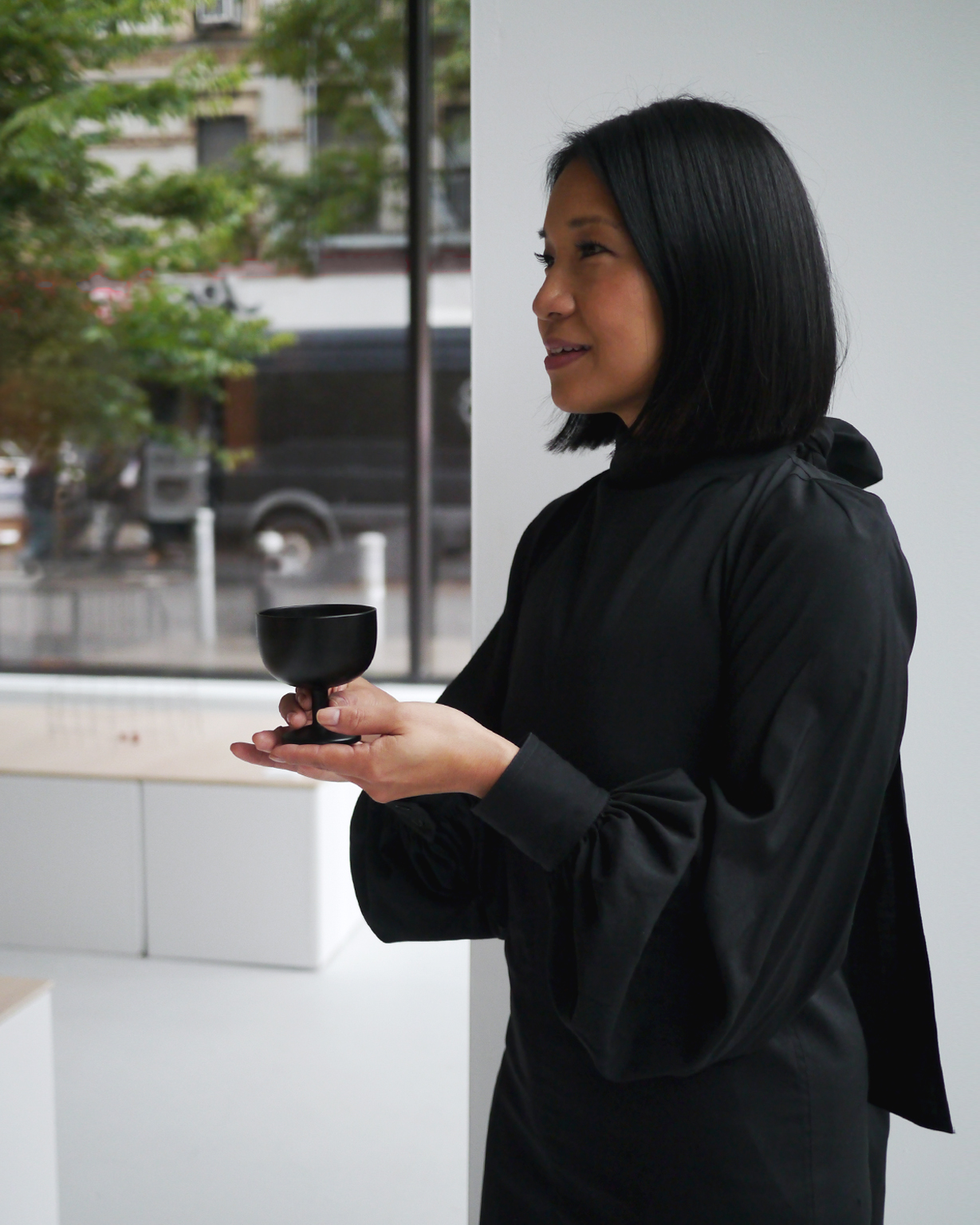
Noir Ice Cream Cup
“There is an intentional purity about the way I see and create. There is meaning in every material I select in my practice and the objects I choose to be part of my life and daily rituals. In simplicity there is strength, the understated and classic profile of this vessel is the perfect way to indulge in my ice cream flavor SHISO GOTO”.
– Stephanie Goto


Teak Cutting Board
“Every morning, the first thing we eat is a fruit. We slice it on this cutting board, and don’t bother with an additional plate, snacking directly from the hand-carved surface as we prepare our more substantial breakfast. The board, untainted by onion or garlic or spicy chilies, is held separately for fruit only, and the fruit depends on the season. right now it’s crisp apples and pears, but a short month ago it was juicy melons or a white-fleshed peach. The warm wood acts as a backdrop, setting each fruit apart from the next, creating an instant still-life on our counter. As we prepare the rest of our food, the slices of fruit disappear, lending their electric energy to begin the day. Then, the board is washed and set to await tomorrow’s beginning”.
– Ari Spool and Rob Chabebe

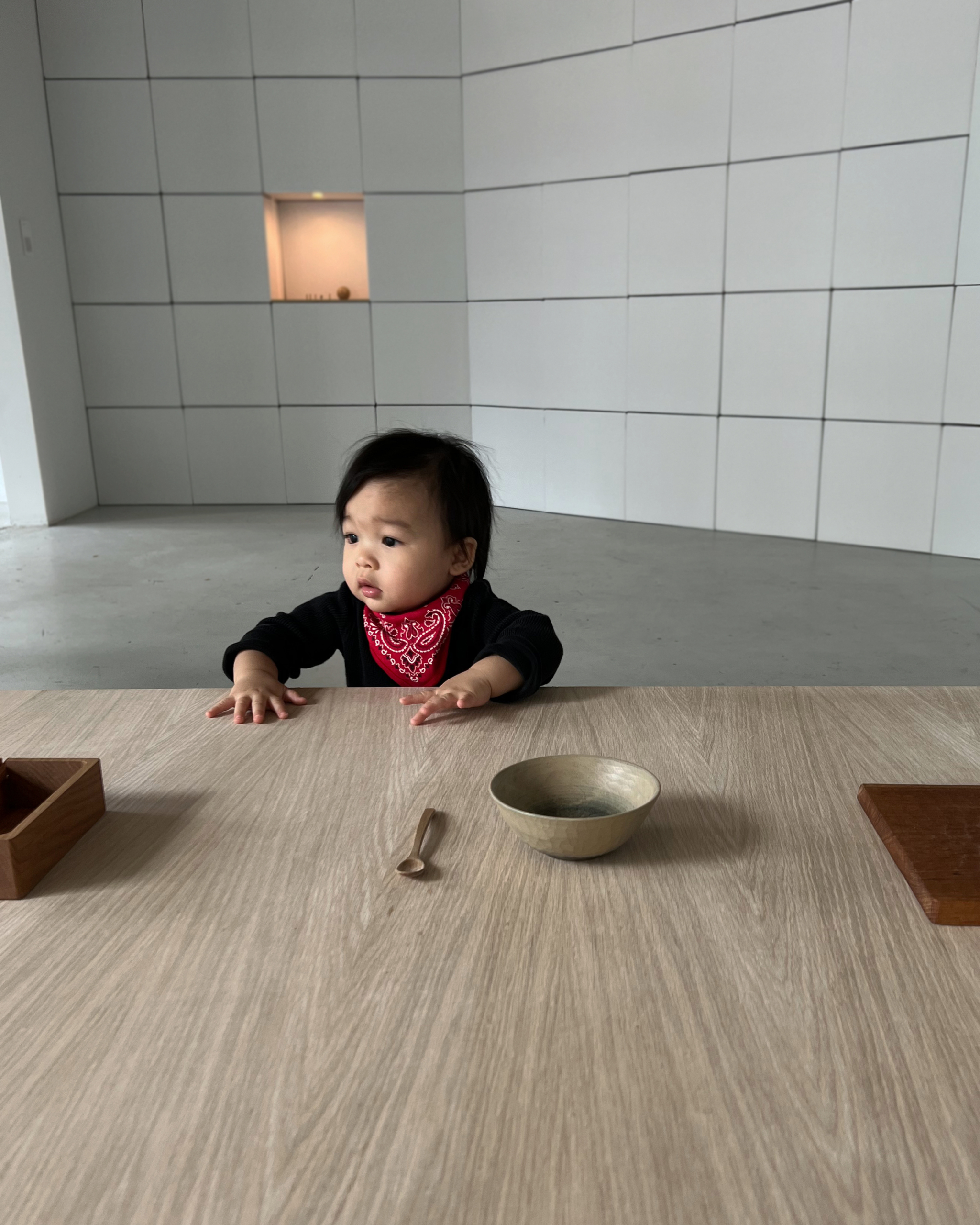
Baby Bowl and Baby Spoon
“This urushi bowl and mountain cherry spoon were gifted to us by Mitani-san and his wife Junko-san when we announced the birth of our baby son, Keo, last Fall. The pieces bring flashbacks to the early sleepless nights in our newborn bubble and represent our life as a new family. While nursing or bottle-feeding, in a rocking chair with a perfect view of our kitchen cabinets, the sight of the bowl and spoon reminded us that the newborn days are numbered. Soon he would use these pieces to transition to solids.
That day came too quickly. His first food was puréed avocado in this bowl with this spoon, and since then, many new foods have been explored. Some rejected, some inhaled. He no doubt has an affinity towards berries. Although in this first year of life, we had to adapt to continual change, the one constant was the presence of the bowl – only instead of purées, it is now a vehicle for finger foods like diced strawberries and blueberries… his two favourites.
When he is an adult and we are empty nesters, these pieces will likely trigger tears of joy thinking back on this year of total mind and body rewiring. Until then, there are many more food memories to be made”.
– Stevenson, Angélique and Keoli Aung


Coffee Canister with Scoop
“Simply put, the coffee canister brings delight to every detail of my morning. Rainy or sunny.”
– Yann Tong


Picnic Set
“These thirteen pieces, ingeniously combined in one compact package, cupped in my hands, holds a boundless treasure trove of cherished memories while promising new adventures waiting to unfold. On the center of my dining table, this set serves as a reminder of the simplicity that underlies a life well-lived. It is a tribute to shared moments with family, friends, and neighbors. Unlocking the box unfolds a world of discovery, wonder, and delightful surprises. Each piece, when arranged on the dining table, becomes a canvas for culinary creativity, whether presenting dim sum, desserts, afternoon tea treats, a fresh salad, or a light meal. Despite the demands of a busy work life that have kept me from using the set for a picnic, I find solace in the fact that I reside just across from a park. I extend an invitation when time permits: please come over and join me in savoring the joys of this craft”.
– Rene Tiotuyco

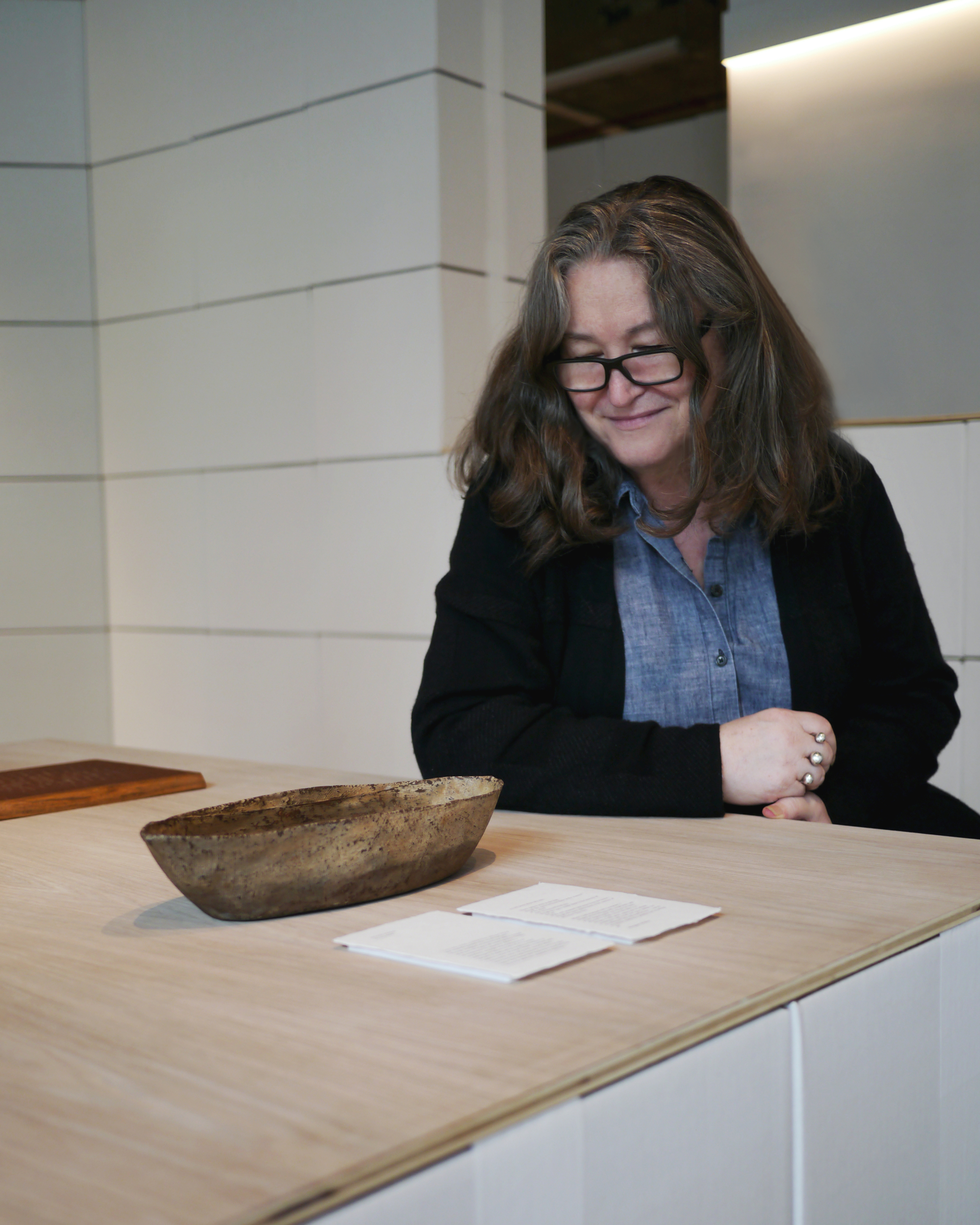
Hemp Bowl
“I love this vessel molded from antique hemp and tenderly painted with urushi lacquer. Though designed as a functional object, I think of it more as a place of contemplation.
I enjoy its emptiness. In Japanese, there is a conscious, strategic materialization of nothingness known as Ma. It is a careful process of eliminating anything excessive in order to create an empty vessel, a vacuum with a powerful center of gravity, toward which consciousness and creativity is drawn. It’s the space that shapes the experience whether it be material, physical, sensual, or spiritual.
An old poem about Ma says:
Thirty spokes meet in the hub,
though the space between them is the essence of the wheel.
Pots are formed from clay,
though the space inside them is the essence of the pot.
Walls with windows and doors form the house,
though the space within them is the essence of the house. (Lao Tzu)
When I look at Mitani-san’s sculpture, I imagine all the fishing boats, cargo boats, and people migrating the vast oceans for trade, pleasure or escape. To live life fully is to navigate it with grace, appreciate its infinite possibilities, and create our ‘space within’ for everything we love and want to have — not by relentlessly wishing to possess, but by letting go”.
– Margaret Murray
To all those fortunate to live with works by Ryuji Mitani or other craft artisans, we hope this article inspires you to reflect on the special meaning your handmade pieces have in your own lives.
Thank you endlessly to all participants for loaning items and for your thoughtful passages.


